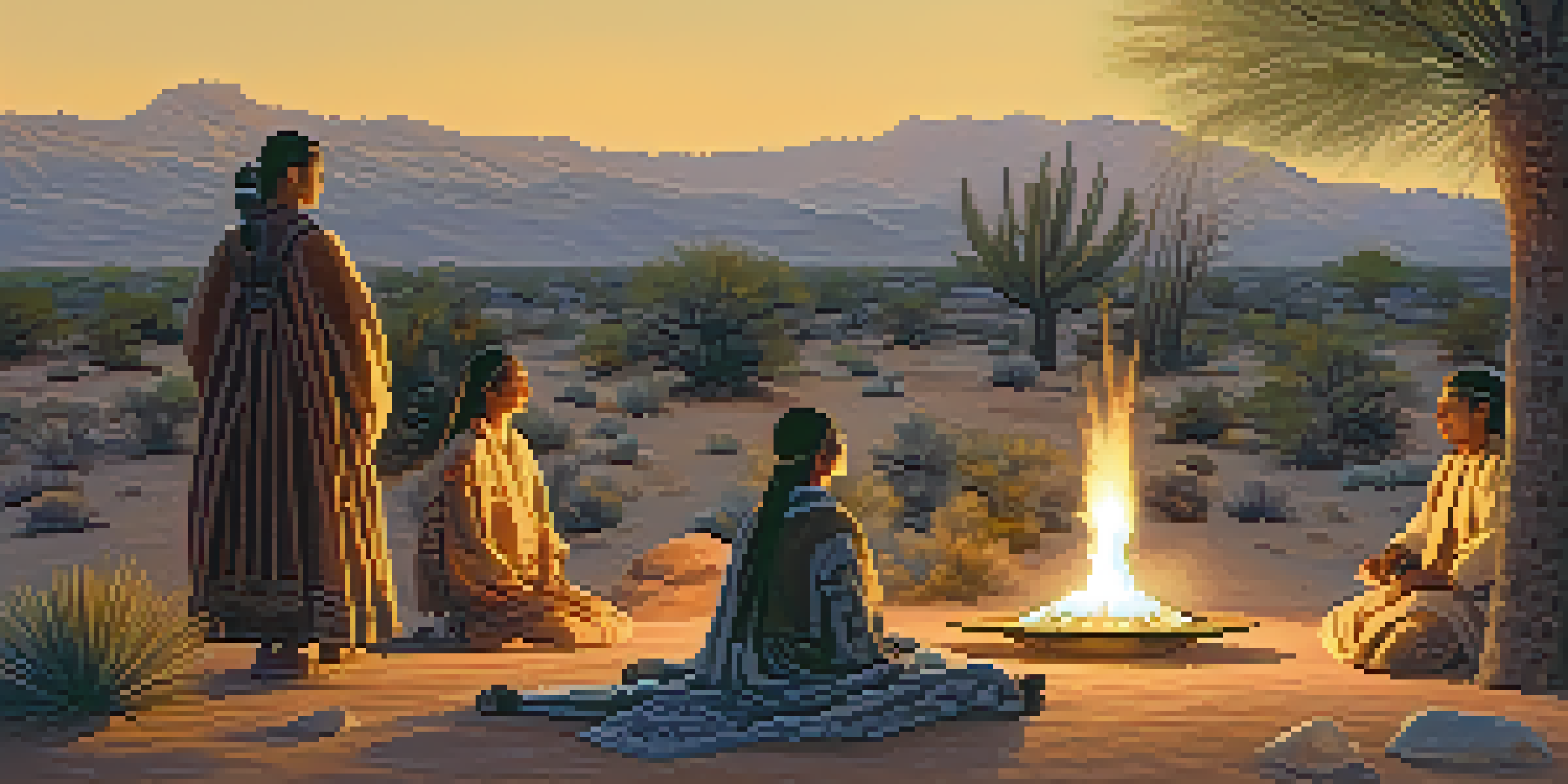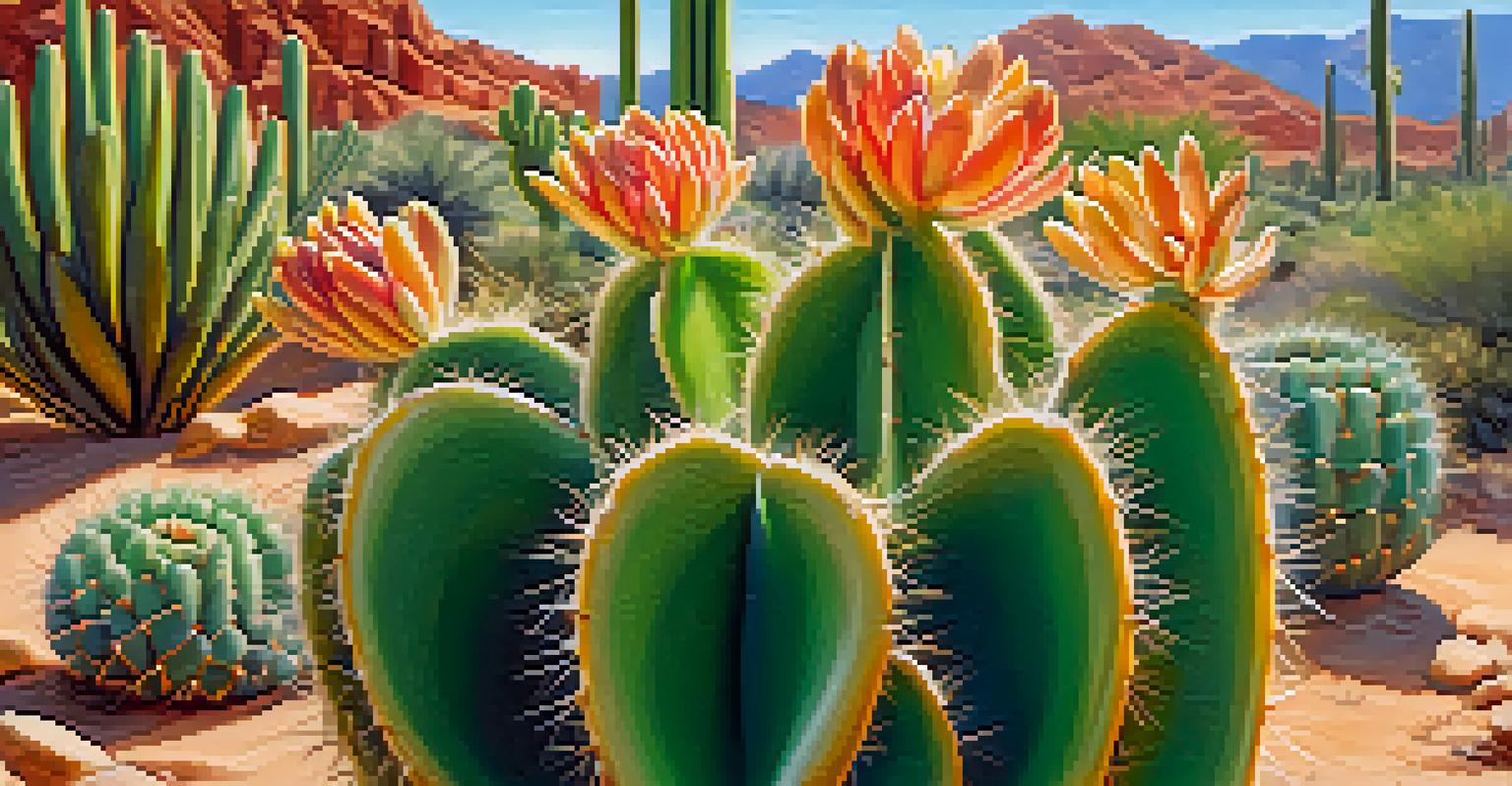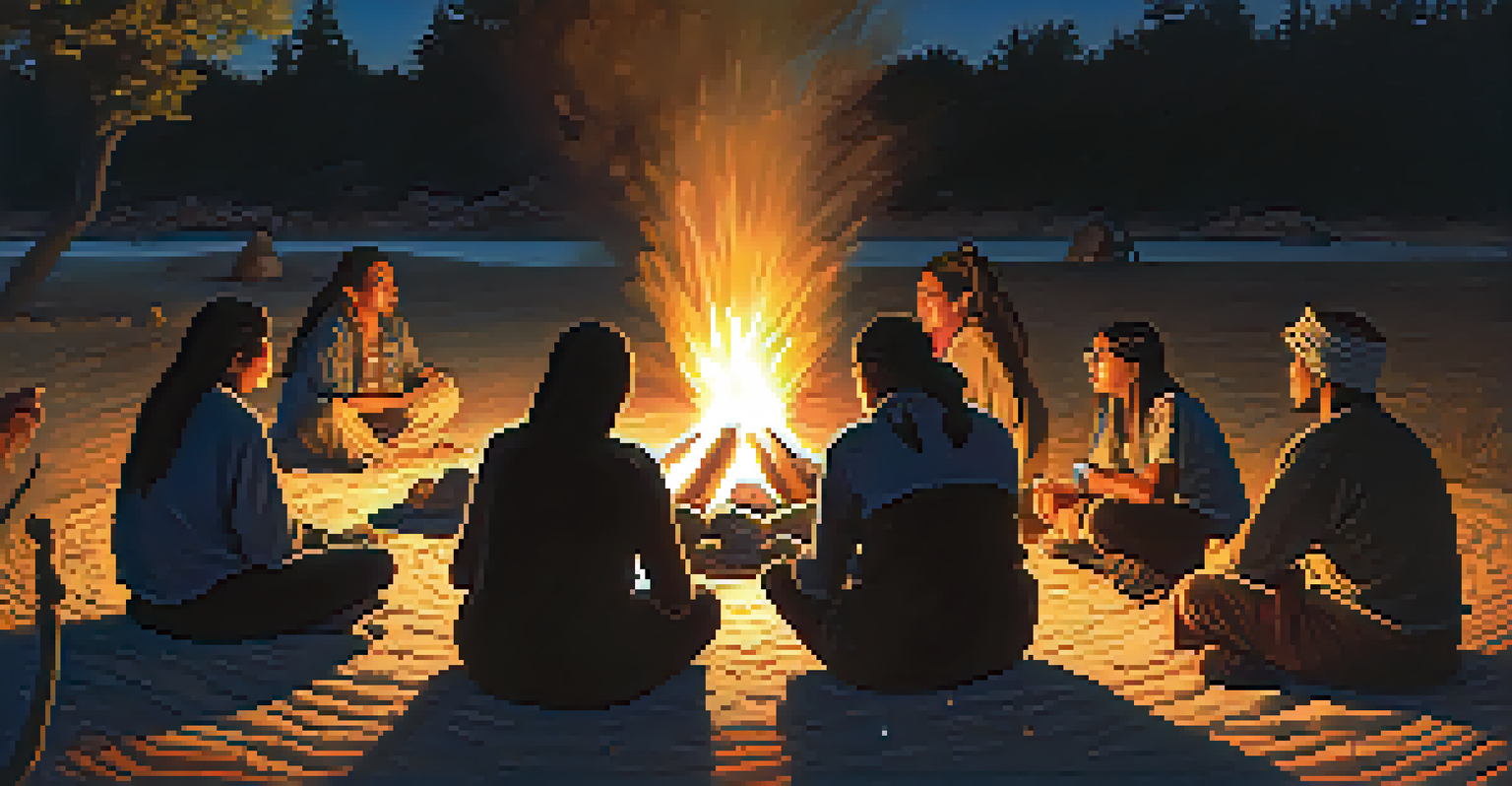Peyote and Community: A Path to Collective Healing

Understanding Peyote: More Than Just a Cactus
Peyote, a small cactus native to Mexico and the southwestern United States, has been used for centuries in spiritual and healing ceremonies. This sacred plant contains mescaline, a psychoactive compound known for its ability to alter perceptions and evoke profound experiences. However, it's important to understand that peyote is not merely a recreational substance; it has deep cultural and spiritual significance, especially among Indigenous communities.
Psychedelics are a tool for self-discovery, personal transformation, and healing, but they must be approached with respect and understanding of their cultural significance.
The use of peyote is often tied to the rituals and traditions of Native American Church members, where it serves as a sacrament for communion with the divine. Through these ceremonies, participants seek guidance, clarity, and healing, making peyote a tool for both individual and collective spiritual journeys. This shared experience fosters a sense of community and connection among participants, transcending individual struggles.
As we delve deeper into the role of peyote in community healing, we see that its effects extend beyond personal insights. The communal aspect of peyote ceremonies highlights the importance of shared experiences in promoting psychological and emotional well-being, illustrating how collective healing can arise from these sacred practices.
The Role of Community in Healing Practices
Community plays a crucial role in healing, especially within Indigenous cultures where shared experiences are valued. When individuals come together to participate in peyote ceremonies, they not only seek personal healing but also support one another in their journeys. This communal aspect creates a safe space for vulnerability and openness, fostering trust and connection among participants.

The collective experience of peyote ceremonies allows individuals to share their stories, struggles, and triumphs. This storytelling aspect is vital, as it reinforces the idea that no one is alone in their challenges. By witnessing each other's journeys, participants can gain perspective, empathy, and understanding, which are essential components of the healing process.
Peyote's Cultural Significance
Peyote holds deep cultural and spiritual importance for Indigenous communities, serving as a vital part of their identity and healing practices.
Moreover, the sense of belonging that arises from these rituals can significantly boost mental health. When people feel connected to a community, they often experience lower levels of anxiety and depression. This highlights the powerful synergy between community and healing, demonstrating that collective support can lead to profound positive changes in individuals' lives.
Peyote as a Catalyst for Personal Transformation
Many who use peyote report experiencing deep personal transformations during their ceremonies. These experiences often lead to insights about one's life, relationships, and purpose. The psychoactive effects of peyote can facilitate profound emotional release, allowing individuals to confront and process past traumas in a supportive environment.
Community is the foundation of healing, where shared stories and experiences can foster deep connections and support among individuals.
Through guided ceremonies, participants often engage in self-reflection, which can be both challenging and liberating. The communal setting provides a framework where individuals can share their revelations, creating a ripple effect of healing. This shared vulnerability fosters a sense of resilience, as individuals realize they are not alone in their struggles.
In essence, peyote serves as a bridge between the personal and communal aspects of healing. By catalyzing personal transformation within a supportive community, participants can emerge from the experience with a renewed sense of purpose and connection to others. This integration of personal and collective healing is key to the power of peyote ceremonies.
Cultural Significance of Peyote in Indigenous Communities
For Indigenous peoples, peyote is more than just a plant; it is a vital part of their cultural and spiritual identity. The rituals surrounding its use are steeped in tradition, often passed down through generations. This cultural significance underscores the importance of respecting and understanding the historical context of peyote use, especially in the face of modern challenges to these traditions.
The preservation of peyote ceremonies is essential for maintaining cultural heritage and community cohesion. These rituals not only provide healing but also serve as a means of cultural expression and identity. By participating in these ceremonies, individuals reinforce their connection to their ancestors and cultural roots, which is vital in a world that often seeks to marginalize these traditions.
Community Healing Through Peyote
Peyote ceremonies foster a sense of community, allowing individuals to support one another in their healing journeys and share personal stories.
Furthermore, the revival of peyote practices among younger generations highlights the ongoing relevance of these rituals. As communities grapple with the impacts of colonization and modernity, peyote ceremonies offer a way to reclaim their heritage and foster resilience. This cultural revival is a testament to the enduring power of peyote in promoting healing and unity within Indigenous communities.
Challenges Faced by Peyote and Indigenous Practices
Despite its cultural significance, the use of peyote faces numerous challenges today. Overharvesting, habitat loss, and legal restrictions threaten the availability of this sacred plant. As demand for peyote grows, particularly among non-Indigenous users, there is a risk that Indigenous communities may lose access to their traditional practices, which can disrupt the cultural and spiritual fabric of these communities.
Additionally, the appropriation of peyote by those outside Indigenous cultures raises ethical concerns. When individuals seek to experience peyote without understanding its cultural context, it can lead to commodification and dilution of the spiritual practices associated with its use. This not only undermines the significance of peyote but also disrespects the traditions of the communities that have relied on it for generations.
Addressing these challenges requires a collaborative approach that honors Indigenous rights and knowledge. By advocating for the protection of peyote habitats and respecting the cultural practices surrounding its use, we can help preserve this vital resource for future generations. This not only ensures the continuation of healing traditions but also fosters a deeper understanding of the importance of cultural sustainability.
Modern Perspectives on Peyote and Healing
In recent years, there has been a resurgence of interest in the therapeutic potential of peyote and other entheogens. Researchers and mental health professionals are beginning to explore the benefits of these substances in treating conditions like PTSD, anxiety, and depression. This modern perspective aligns with traditional uses of peyote in healing, highlighting the plant's potential as a valuable tool for mental health.
As society becomes more open to alternative healing methods, the integration of peyote into therapeutic practices offers new possibilities for individuals seeking healing. However, it is essential to approach this integration with caution and respect for Indigenous practices. Collaborating with Indigenous leaders and practitioners ensures that the cultural significance of peyote is honored while exploring its therapeutic applications.
Challenges Facing Peyote Practices
The availability of peyote is threatened by overharvesting and legal restrictions, raising concerns about the preservation of Indigenous traditions.
Ultimately, the modern exploration of peyote's healing properties can lead to a more comprehensive understanding of well-being. By combining traditional wisdom with contemporary scientific research, we can create holistic approaches to mental health that respect and incorporate diverse cultural perspectives. This synergy between ancient practices and modern science can pave the way for more effective healing modalities.
The Future of Peyote and Community Healing
Looking ahead, the future of peyote and its role in community healing is both promising and complex. As awareness of the therapeutic benefits of peyote grows, there is potential for increased recognition and respect for Indigenous practices. This shift could lead to greater collaboration between Indigenous communities and modern health practitioners, fostering mutual understanding and support.
However, it is crucial to approach this future with mindfulness. Protecting peyote habitats and ensuring that Indigenous voices are at the forefront of any discussions about its use is essential. This responsibility requires a commitment to ethical practices that honor the cultural significance of peyote while exploring its healing potential in a contemporary context.

Ultimately, the journey of peyote and community healing is a shared path that invites all of us to engage with these rich traditions thoughtfully. By fostering respect, understanding, and collaboration, we can contribute to a future where peyote continues to be a source of healing, connection, and cultural preservation for generations to come.